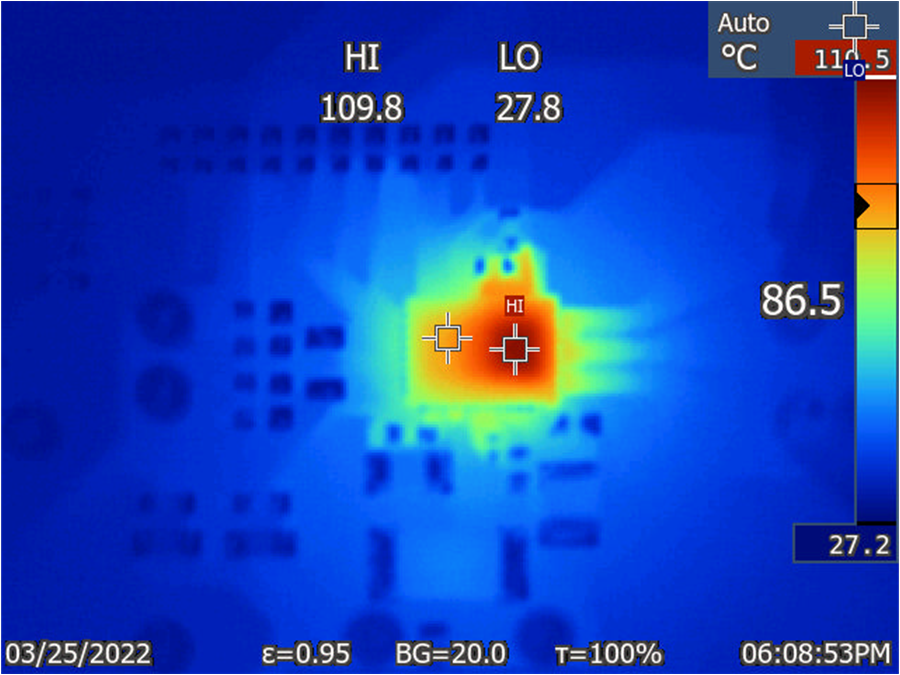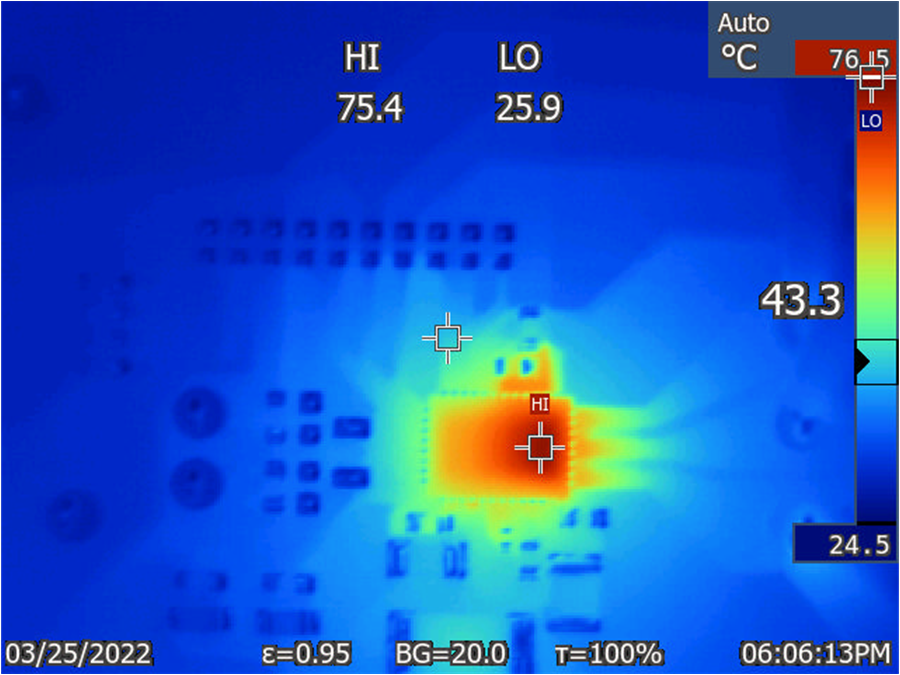SLLA575 June 2022 DRV10987 , MCF8316A , MCT8316A
2.3 Improving System Efficiency by Minimizing Power Losses
Power dissipation in MCF8316A can be from various sources such as RdsOn of the MOSFETs, MOSFET switching losses, MOSFET slew rate, operating supply current dissipation, and so forth. MCF8316A provides configurable options to minimize power losses and maximize thermal efficiency.
Power losses in MCF8316A can be minimized by enabling buck regulator power sequencing [BUCK_PS_DIS], increasing the slew rate [SLEW_RATE], decreasing the PWM output frequency [PWM_FREQ_OUT] and configuring the PWM modulation scheme to “Discontinuous space vector PWM modulation”.
Figure 2-14 shows the thermal image of MCF8316A at Continuous PWM modulation, slew rate at 50 V/µs, 50 kHz and buck regulator power sequencing disabled. With these configurations, device case temperature is 109.8˚C on a four-layer, 1 oz copper thickness PCB.
 Figure 2-14 Thermal Image of MCF8316A –
Higher Case Temperature
Figure 2-14 Thermal Image of MCF8316A –
Higher Case TemperatureFigure 2-15 shows the thermal image of MCF8316A at discontinuous PWM modulation, slew rate at 200 V/µs, 20 kHz and buck regulator power sequencing enabled. With these configurations, device case temperature dropped to 75.4˚C on a four-layer, 1 oz copper thickness PCB.
 Figure 2-15 Thermal Image of MCF8316A -
Lower Case Temperature
Figure 2-15 Thermal Image of MCF8316A -
Lower Case Temperature